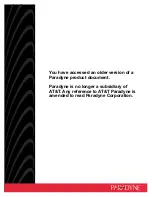
3Com Switch 8800 Configuration Guide
Chapter 22 IP Routing Policy Configuration
22-1
Chapter 22 IP Routing Policy Configuration
22.1 Introduction to IP Routing Policy
When a router advertises or receives routing information, it possibly needs to
implement some policies to filter the routing information, so as to receive or advertise
the routing information which can meet the specified condition only. A routing protocol,
e.g. RIP, may need import the routing information discovered by other protocols to
enrich its routing knowledge. While importing the routing information, it possibly only
needs import the information meeting the conditions and set some special attributes to
make them meet its requirement.
For implementing the routing policy, you need define a set of matching rules by
specifying the characteristics of the routing information to be filtered. You can set the
rules based on such attributes like destination address and source address of the
information. The matching rules can be set in advance and then used in the routing
policy to advertise, receive and import the route information.
22.1.1 Filter
In the Switch 8800, five kinds of filters, Route-policy, acl, as-path, community-list, and
ip-prefix, are provided to be called by the routing protocols. The following sections
introduce these filters respectively.
I. acl
The access control list (ACL) used by routing policy can be divided into the following
types:
z
Number-based basic ACLs
z
Name-based basic ACLs
z
Number-based advanced ACLs
z
Name-based advanced ACLs
z
Number-based L2 ACLs
z
Name-based L2 ACLs
z
Number-based user ACLs
z
Name-based user ACLs
For routing information filtering, the basic ACL is generally used. When users define the
ACL, they will define the range of an IP address or subnet to the destination network
segment address or the next-hop address of the routing information. If an advanced
ACL is used, perform the matching operation by the specified source address range.
















































